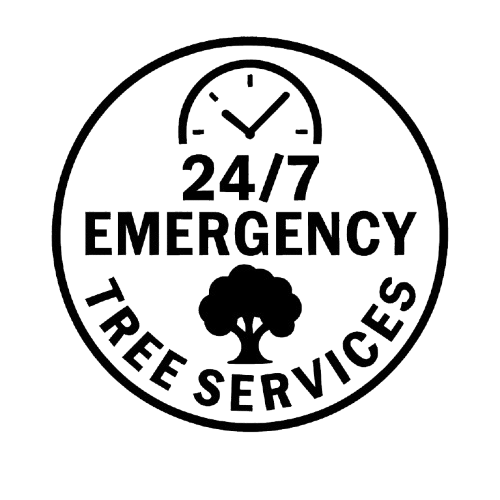In a bustling city like New York, the value of green spaces cannot be overstated. With their towering canopies and robust structure, Sycamore trees significantly enhance urban environments. Known for their resilience, beauty, and longevity, these trees are aesthetically pleasing and provide essential environmental and social benefits to the city. From improving air quality to providing much-needed shade in public parks and streets, sycamores are a natural solution to some challenges urban landscapes face.
Key Takeaways:
- Sycamore Trees Improve Air Quality and Reduce Flooding: Sycamore trees’ large root systems and ability to absorb pollutants make them instrumental in managing urban stormwater and enhancing air quality, two critical environmental issues in NYC.
- Aesthetic and Social Benefits Create Community Spaces: Sycamores contribute to the beauty of NYC’s streets and parks, creating inviting, shaded areas for people to gather and enjoy. This promotes social interaction and enhances the livability of neighborhoods.
- Sycamores Offer Long-term Economic and Environmental Sustainability: These low-maintenance trees are an intelligent investment for NYC’s future. They provide lasting benefits for decades, making them an economically viable choice for city planners looking to enhance urban green spaces.
Overview of Sycamore Trees
Native to North America, the American sycamore tree (Platanus occidentalis) is well-known for its eye-catching look and environmental adaptability. Owing to their adaptability, these trees are frequently found in urban and rural environments, making them a well-liked option for landscapers and city planners.
Description of the American Sycamore Tree
American sycamores are easily recognizable by their towering height, often reaching up to 100 feet, and their large, wide-spreading canopies that provide ample shade. One of the most distinctive features of the sycamore is its bark, which flakes off in patches, revealing a patchwork of green, white, and tan underneath. This unique appearance adds to the tree’s aesthetic appeal, especially in city environments where greenery is often lacking.
Native to North America
As a native species, the sycamore has flourished in various conditions, from riverbanks to city streets. This adaptability makes it a resilient option for urban settings like New York City, where environmental stressors such as pollution, limited soil space, and fluctuating temperatures can challenge less robust tree species.
Characteristics: Fast-Growing, Large Canopy, and Resilience
- Fast-growing: Sycamore trees are known for their rapid growth, making them an excellent option for cities looking to establish green spaces quickly. They can grow as much as 6 feet per year, rapidly filling public spaces and providing shade.
- Large Canopy: The expansive canopy of the sycamore offers a significant amount of shade, which helps cool down city streets and parks and reduces urban heat islands. This makes them ideal for creating calm, shaded spaces for residents to enjoy during hot summers.
- Resilient to Pollution and Climate Variations: One key reason sycamores are frequently chosen for urban environments is their resilience. Sycamores can withstand the heavy air pollution and compacted soil typical in metropolitan areas like New York City. They are also hardy enough to withstand weather conditions, from chilly winters to hot, muggy summers, making them a dependable option for an enduring urban tree.
Environmental Benefits of Planting Sycamores
Sycamore trees offer a variety of environmental benefits that make them a valuable asset in urban spaces like New York City. Their natural ability to improve air quality, manage stormwater, relax urban environments, and support wildlife directly addresses the major ecological challenges cities face today.
Air Quality Improvement
One of sycamore trees’ most significant environmental benefits is their ability to improve air quality. In a bustling metropolis like NYC, pollution levels can be high due to vehicle emissions, industrial activities, and other urban pollutants. Sycamores contribute to cleaner air by absorbing large amounts of CO2 during photosynthesis and trapping particulate matter such as dust, soot, and other airborne particles on their leaves. This filtration process helps purify the air and reduces the risk of respiratory illnesses for city dwellers.
|
Pollutant |
Sycamore’s Role |
|
CO2 (carbon dioxide) |
Absorbed through photosynthesis |
|
PM2.5 (particulate matter) |
Trapped on leaves, reducing airborne particles |
Stormwater Management
Urban areas like NYC are prone to flooding due to the large number of impervious surfaces, such as concrete, which prevent water from being absorbed into the ground. Sycamore trees, with their extensive root systems, are a natural solution to this problem. By absorbing significant amounts of rainwater, they reduce the load on the city’s drainage systems and lower the amount of stormwater runoff, thereby playing a pivotal role in preventing urban flooding and ensuring the safety of residents.
|
Benefit |
Sycamore’s Impact |
|
Reduced stormwater runoff |
Absorption through large root systems |
|
Pressure on NYC’s stormwater systems |
Eased due to natural water absorption |
Cooling Effects
The urban heat island effect, in which temperatures in metropolitan regions are much higher than in nearby rural areas, is common in cities. The concentration of roads, buildings, and other heat-absorbing and radiating structures is to blame. With their large canopies, Sycamores provide substantial shade that helps calm streets, parks, and sidewalks. By reducing the need for air conditioning in nearby buildings, these trees also lower energy consumption and decrease greenhouse gas emissions.
|
Heat Island Issue |
Sycamore’s Contribution |
|
Elevated urban temperatures |
Canopy provides shade, reducing heat. |
|
Energy consumption for cooling |
Lowered due to reduced need for air conditioning |
Wildlife Habitat
Sycamore trees are beneficial to humans and provide critical support to urban biodiversity. Their giant branches, hollow trunks, and broad leaves are habitats for various species of birds, insects, and small animals. For example, birds use sycamore branches for nesting, and insects find refuge in the crevices of their bark. These trees also provide seed balls and food for birds and small mammals. By fostering this biodiversity, sycamores help maintain a balanced urban ecosystem, offering ecological and aesthetic benefits.
|
Wildlife Supported |
Sycamore’s Role |
|
Birds |
Nesting sites, food from seeds |
|
Insects |
Shelter within bark crevices |
|
Small mammals |
Food source, habitat |
Aesthetic and Social Benefits
Aesthetic Appeal
Sycamore trees are renowned for their striking appearance, making them a valuable addition to the visual landscape of New York City’s parks, streets, and public spaces. Their towering height and broad canopies create a sense of grandeur, while the distinctive, peeling bark—which reveals a patchwork of white, tan, and green—adds visual interest year-round. In a city filled with concrete and steel, sycamores bring natural beauty and a touch of tranquility to urban environments.
Historical Significance
Sycamores are often found in NYC’s older neighborhoods and near historical landmarks, creating a living connection to the city’s past. Many of these trees have been standing for decades, and their presence in areas like Central Park or along historic avenues adds to the city’s cultural and historical narrative. This historical continuity links modern residents with the generations before them, giving sycamores a symbolic role in preserving the legacy of NYC’s evolving landscape.
Social Spaces
In addition to their aesthetic value, sycamores play a vital role in creating social gathering spaces. Their large canopies provide ample shade, making them ideal for parks, playgrounds, and public seating areas where people can escape the summer heat. These shaded spots encourage residents to spend more outdoors, fostering community engagement and creating natural gathering hubs. Whether families have picnics or friends meet for outdoor activities, sycamores support the social fabric of urban life.
|
Aesthetic and Social Benefits |
Sycamore’s Role |
|
Enhanced visual appeal |
Striking bark and towering height beautify spaces. |
|
Historical connection |
Links NYC’s past with present neighborhoods and landmarks |
|
Social spaces and gathering hubs |
Shaded areas encourage community interaction and outdoor activities. |
Economic Benefits
Property Value Increase
Research consistently shows that areas with more trees, such as huge ones like sycamores, experience higher property values. Well-treed neighborhoods are more attractive to potential buyers and contribute to a sense of well-being for residents. Sycamores’ aesthetic appeal and environmental benefits make nearby properties more desirable, leading to higher real estate prices and increased business interest. Sycamores planted along streets or near homes provide a natural boost to property value, benefiting both homeowners and city planners.
Cost Savings for NYC
Sycamores offer economic advantages beyond property value increases. By providing shade, these trees help reduce the need for artificial cooling during the summer months. Buildings shaded by sycamores can experience lower cooling costs, translating into energy savings for residents and businesses. Furthermore, the trees’ ability to improve air quality helps reduce public health costs related to respiratory illnesses. These long-term savings make sycamores a cost-effective choice for urban development and public infrastructure planning.
|
Economic Benefits |
Sycamore’s Contribution |
|
Increase in property values |
Enhances neighborhood desirability |
|
Reduction in cooling costs |
It provides natural shade, reducing energy use. |
|
Lower public health costs |
Improves air quality, reducing respiratory illness expenses |
Long-term Sustainability
Low Maintenance
Sycamore trees are relatively low-maintenance, making them attractive for urban planners looking for sustainable and cost-effective greenery. Once established, sycamores require minimal care, primarily routine pruning, and occasional disease monitoring. Their ability to thrive in polluted environments and poor soil conditions further reduces the need for extensive upkeep, making them a practical and economical choice for NYC’s green spaces.
Durability
One of the most compelling aspects of sycamores is their longevity. These trees can live for centuries, providing long-term benefits without frequent replanting. Their hardiness in urban environments means that a single sycamore can contribute to the city’s ecological and social fabric for generations. This durability ensures that investments in planting sycamores will pay off over the long run, offering decades of environmental, social, and economic returns.
Resilience to Pests and Diseases
Urban trees often face challenges from pests and diseases, which can shorten their lifespans and increase maintenance costs. However, sycamores are known for their resilience to many common tree diseases and pests. Their ability to withstand these threats makes them a reliable option for public spaces, ensuring that natural threats will not easily undo the city’s investment in these trees.
|
Sustainability Factors |
Sycamore’s Role |
|
Low maintenance |
Requires minimal care and thrives in urban settings. |
|
Longevity |
Can live for centuries, offering long-term benefits |
|
Pest and disease resilience |
Resistant to many common urban tree threats |
FAQs
Why are sycamore trees suited for urban environments?
Sycamore trees are highly adaptable, resistant to pollution, and have an extensive root system, making them ideal for cities like NYC.
Do sycamores require a lot of maintenance?
No, sycamore trees are relatively low-maintenance compared to other urban trees, needing only periodic pruning and care.
How do sycamore trees help reduce flooding in NYC?
Their extensive root systems absorb large amounts of rainwater, reducing surface runoff and helping manage stormwater in the city.
What wildlife is attracted to sycamore trees in NYC?
Sycamores provide habitat for birds, small mammals, and insects, thus supporting local urban biodiversity.
Are sycamore trees a good investment for NYC’s future?
Yes, sycamores are durable and long-living, contributing to the environmental and economic sustainability of NYC public spaces for centuries.
Conclusion
Planting sycamores in New York City’s public spaces offers a multifaceted range of benefits that go beyond aesthetics. These towering trees improve air quality, reduce flooding, and cool the streets and parks, making the urban environment more livable. Their historical significance and the social spaces they create help foster a sense of community. Economically, sycamores enhance property values and contribute to energy savings, while their low maintenance and long-lasting nature ensures they will provide these benefits for generations. In a constantly evolving city, sycamores symbolize sustainability, resilience, and natural beauty, making them an essential part of NYC’s landscape planning.




